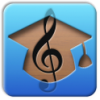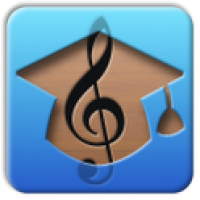Main menu
You are here
Music Tutor Sight Read
User login
<p><br /> Learn to read and write music (+flats, sharps, keys) with MusicTutor SightRead</p>
<br />
<p><br /> Learn to sight-read music with MusicTutor SightRead (MTSR). MTSR is a quiz game designed for music students, for learning to read (and write) music in an easy and pleasant way.</p>
<br />
<p><br /> *<br /><br /> ** Gameplay</p>
<br />
<p><br /> MTSR includes some games, but all them work the same way:</p>
<br />
<p><br /> 1) The program ask a question, which is shown on a panel (question panel)<br /><br /> 2) The user answers, using another panel (answer panel). If the answer is correct, a sound is played, corresponding to the question made; if not, a failure sound is played.</p>
<br />
<p><br /> These are the included games:</p>
<br />
<p><br /> 1) Read staff: The programs draws a staff in question panel, and a note in its position. The user must answer with a keyboard (piano or buttons)<br /><br /> 2) Write staff: The program shows a note name in question panel. The user must answer using the answer panel (which draws a staff) dragging the note to its correct height.<br /><br /> 3) Key signature: The program shows a staff with some key signature, and the user must answer, choosing such key within a keyboard.</p>
<br />
<p><br /> *<br /><br /> ** Game modes</p>
<br />
<p><br /> 1) Timed tests: during the selected time interval, the user answers questions. Correct and wrong answers are accounted, and when the time is over, a score (based on correct&wrong answers and time) is shown.<br /><br /> 2) Study: the user answers questions without any time limit. In this mode, the "Learn" button is available, and it changes program behaviour.<br /><br /> 3) Learn: in this mode, the user touches the answer panel, and the program shows the question (or questions) which would have been answered by given answer.</p>
<br />
<p><br /> *<br /><br /> ** Time options</p>
<br />
<p><br /> Game time can be chosen. If "0" is chosen, the game has no time limit and "Learn" mode can be activated.</p>
<br />
<p><br /> Stored results from previous tests can be shown.</p>
<br />
<p><br /> *<br /><br /> ** Key and Range options</p>
<br />
<p><br /> Three clef types can be chosen:</p>
<br />
<p><br /> 1) Treble clef<br /><br /> 2) Bass clef<br /><br /> 3) Grand clef (union of Treble and Bass clefs)</p>
<br />
<p><br /> For every one of the three clef types, a range can be chosen:</p>
<br />
<p><br /> a) predefined, to be choosen between 6 ranges<br /><br /> b) manually defined by user</p>
<br />
<p><br /> *<br /><br /> ** Accidental options</p>
<br />
<p><br /> There are three accidental modes:</p>
<br />
<p><br /> 1) Natural: only natural notes are to be asked<br /><br /> 2) Simple: natural, flats and sharp notes can be asked<br /><br /> 3) Key signature: questions are made, in the context of a key.</p>
<br />
<p><br /> Natural mode has no associated options.</p>
<br />
<p><br /> Simple accidentals asks natural or accidental notes. The user can choose between only sharps, only flats or both.</p>
<br />
<p><br /> Key Signature mode lets the user choose one or more keys. If more than one key is chosen, every new question changes the key randomly.</p>
<br />
<p><br /> In this mode, the user can choose between two question filters:<br /><br /> A) Diatonic: only notes belonging to the current key are asked.<br /><br /> B) Chromatic: any note will be asked (whether or not it belongs to current key).</p>
<br />
<p><br /> *<br /><br /> ** General options</p>
<br />
<p><br /> For "Read Staff" game, the user can choose the type of keyboard for answering:<br /><br /> 1) Piano keyboard (with or without note names on keys)<br /><br /> 2) Buttons with note names.</p>
<br />
<p><br /> The main difference between both keyboards lies on enharmonic notes.<br /><br /> With piano there is no difference between, for example, F# and Gb, but with buttons, they can be differenciated.</p>
<br />
<p><br /> Sound volume is adjustable (and muteable)</p>
<br />
<p><br /> User can choose the program behaviour when asking a question wrongly:<br /><br /> A) A new question is made, even when previous one has not been correctly answered.<br /><br /> B) The same question is repeated, until the users answers correctly.</p>
<br />
<p><br /> *<br /><br /> **</p>
<br />
<p><br /> MTSR is designed to work in any screen orientation (portrait, landscape), and screen sizes (phone, 7" tablet, 10" tablet). Help is included.</p>
<br />
<p><br /> Learn and enjoy with MSTR!</p>
<br />








